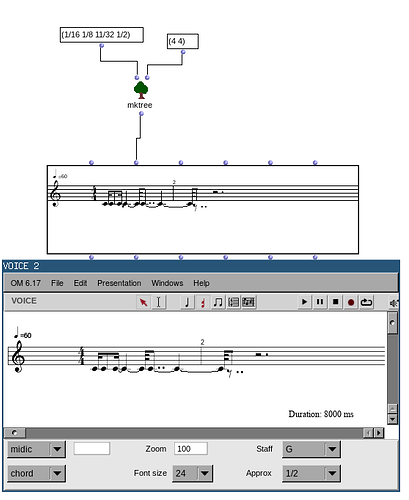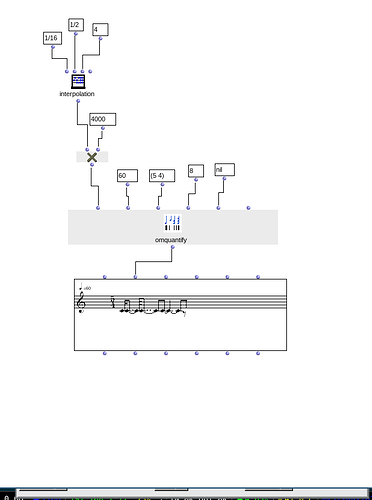Hi all!
Some questions related to rhythm. I try to get the OM quantification logic and how it works without using trees…
Is it possible this list: (1/16 17/24 65/48 2), where the limits, 1/16 a sixteenth note, and 2 a half note and all the middle parts been expressed as rhythm in OM?
This is a supposed rallentando from a start list of (1 2 3 4) numbers scaled to 1/16 low and 2 high.
Are there any interesting patches for rhythm to study? Any rhythm libraries?
Thank you a lot in advance!!!
Dimitris





